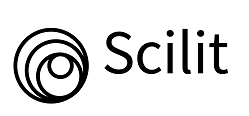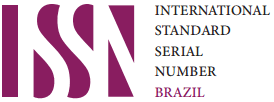Internet addiction and its relationship with mental disorders in adolescents
DOI:
https://doi.org/10.25118/2763-9037.2025.v15.1414Keywords:
Internet addiction, teenagers, mental disorders, nomophobiaAbstract
Introduction: Adolescence is a challenging period for the construction of identity and personality. The easy access to and deliberate use of the Internet can lead to various mental health disorders in adolescents. Objective: To quantify the prevalence of Internet addiction and to analyze its impact on the development and/or maintenance of mental health disorders in adolescents. Method: CEP opinion and TCLE were delivered. The study was carried out with high school students from public schools in Passo Fundo (RS), in November and December 2023. Questionnaires containing sociodemographic and behavioral characteristics were applied, along with two tests: the Internet Addiction Test [1] and the Depression, Anxiety, and Stress Test [2]. Absolute and relative frequencies of the dependent and independent variables were calculated, as well as the prevalence of Internet addiction and its relationship with disorders and other variables. Results: The sample (n=139) is predominantly composed of women (53.2%), 16-year-olds (47.5%), white individuals (61.2%), and those from low-income families (33.1%). Regarding internet usage: 75.5% spend more than 3 hours per day online, and 89.2% use smartphones to access the Internet. Seventeen percent exhibit some degree of Internet addiction; 42% show symptoms consistent with anxiety disorder; 25% display signs of depression; and 22% show indications of stress. A positive association was found between depression, anxiety, stress, and internet addiction (p<0.05). Conclusion: Internet addiction is associated with the development or maintenance of mental health disorders. Its negative impact on mental health is evident, highlighting the need for measures aimed at better support and guidance for adolescents.
Downloads
Metrics
References
1. Young KS, Abreu CN. Dependência de internet: manual e guia de avaliação e tratamento. Porto Alegre: Artmed; 2011.
2. Lovibond PF, Lovibond SH. The structure of negative emotional states: comparison of the Depression Anxiety Stress Scales (DASS) with the Beck Depression and Anxiety Inventories. Behav Res Ther. 1995;33(3):335-43. https://doi.org/10.1016/0005-7967(94)00075-u PMID:7726811
3. Eisenstein E. Adolescência: definições, conceitos e critérios. Adolesc Saude. 2005;2(2):6-7. https://extensao.cecierj.edu.br/material_didatico/sau2202/pdf/aula%201%20_leitura_adolescencia_def_conc_criterios.pdf
4. Tanner JM. Growth at adolescence. 2nd ed. Oxford: Blackwell Scientific Publications, 1962.
5. Osório LC. Adolescente hoje. Porto Alegre: Artmed, 1992.
6. Instituto Brasileiro de Geografia e Estatística. PNAD contínua - pesquisa nacional por amostra de domicílios contínua: acesso à internet e à televisão e posse de telefone móvel celular para uso pessoal. Rio de Janeiro: Instituto Brasileiro de Geografia e Estatística; 2022. https://www.ibge.gov.br/estatisticas/sociais/trabalho/17270-pnad-continua.html?edicao=38243&t=resultados
7. Sanchez-Carbonell X, Beranuy M, Castellana M, Chamarro A, Oberst U. La adiccion a Internet y al movil: ¿moda o trastorno? Adicciones. 2008;20(2):149-59. PMID: 18551228
8. Moromizato MS, Ferreira DBB, Souza LSM, Leite RF, Macedo FN, Pimentel D. O Uso de internet e redes sociais e a relação com indícios de ansiedade e depressão em estudantes de medicina. Rev Bras Educ Med. 2017;41(4):497-504. https://doi.org/10.1590/1981-52712015v41n4rb20160118
9. Kemp S. Digital 2024: global overview report. [place unknown]: DataReportal; 2024. https://datareportal.com/reports/digital-2024-global-overview-report
10. Andrade ALM, Scatena A, Bedendo A, Enumo SRF, Dellazzana-Zanon LL, Prebianchi HB, Machado WL, Micheli D. Findings on the relationship between Internet addiction and psychological symptoms in Brazilian adults. Int J Psychol. 2020;55(6):941-50. https://doi.org/10.1002/ijop.12670 PMID:32266726
11. Ávila GB, Santos ÉN, Jansen K, Barros FC. Internet addiction in students from an educational institution in Southern Brazil: prevalence and associated factors. Trends Psychiatry Psychother. 2020;42(4):302-10. https://doi.org/10.1590/2237-6089-2019-0098 PMID:32520170 - PMCID:PMC7879091
12. Terroso LB, Argimon IIL. Dependência de internet e habilidades sociais em adolescentes. Estud Pesqui Psicol. 2016;16(1):200-19. https://doi.org/10.12957/epp.2016.24839
13. Dalamaria T, Pinto WJ, Farias EDS, Souza OF. Internet addiction among adolescents in a western Brazilian Amazonian city. Rev Paul Pediatr. 2021;39:e2019270. https://doi.org/10.1590/1984-0462/2021/39/2019270 PMID:32638945 - PMCID:PMC7333942.
14. Thiengo DL, Cavalcante MT, Lovisi GM. Prevalência de transtornos mentais entre crianças e adolescentes e fatores associados: uma revisão sistemática. J Bras Psiquiatr. 2014;63(4):360-72. https://doi.org/10.1590/0047-2085000000046
15. Hoare E, Milton K, Foster C, Allender S. Depression, psychological distress and Internet use among community-based Australian adolescents: a cross-sectional study. BMC Public Health. 2017;17:365. https://doi.org/10.1186/s12889-017-4272-1 PMID:28449667 - PMCID:PMC5406913
16. Fleitlich-Bilyk B, Goodman R. Prevalence of child and adolescent psychiatric disorders in southeast Brazil. J Am Acad Child Adolesc Psychiatry. 2004;43(6):727-34. https://doi.org/10.1097/01.chi.0000120021.14101.ca PMID:15167089
17. Soh PCH, Teh BH, Hong YH, Ong TS, Charlton JP. Exploring gender differences in Malaysian urban adolescent Internet usage. First Monday. 2013;18(9). https://doi.org/10.5210/fm.v18i9.4334
18. Costello EJ. Developments in child psychiatric epidemiology. J Am Acad Child Adolesc Psychiatry. 1989;28(6):836-41. https://doi.org/10.1097/00004583-198911000-00004 PMID:2681135
19. Spence SH. A measure of anxiety symptoms among children. Behav Res Ther. 1998;36(5):545-66. https://doi.org/10.1016/s0005-7967(98)00034-5 PMID:9648330
20. Ford T, Goodman R, Meltzer H. The british child and adolescent mental health survey 1999: the prevalence of DSM-IV disorders. J Am Acad Child Adolesc Psychiatry. 2003;42(10):1203-11. https://doi.org/10.1097/00004583-200310000-00011 PMID:14560170
21. Xin S, Wang Y, Sheng L. Impact of social changes and birth cohort on anxiety in adolescents in mainland China (1992-2017): a cross-temporal meta-analysis. Child Youth Serv Rev. 2020;116:105159. https://doi.org/10.1016/j.childyouth.2020.105159
22. Zhao C, Zhou X, Wang F, Jiang M, Hesketh T. Care for left-behind children in rural China: a realist evaluation of a community-based intervention. Child Youth Serv Rev. 2017;82:239-45. https://doi.org/10.1016/j.childyouth.2017.09.034
23. Bisung E, Elliott SJ. Psychosocial impacts of the lack of access to water and sanitation in low- and middle-income countries: a scoping review. J Water Health. 2017;15(1):17-30. https://doi.org/10.2166/wh.2016.158 PMID:28151436
24. Li SH, Graham BM. Why are women so vulnerable to anxiety, trauma-related and stress-related disorders? The potential role of sex hormones. Lancet Psychiatry. 2017;4(1):73-82. https://doi.org/10.1016/s2215-0366(16)30358-3 PMID:27856395
25. Donner NC, Lowry CA. Sex differences in anxiety and emotional behavior. Pflugers Arch. 2013;465(5):601-26. https://doi.org/10.1007/s00424-013-1271-7 PMID:23588380 - PMCID:PMC3805826
26. Roberts RE, Attkisson CC, Rosenblatt A. Prevalence of psychopathology among children and adolescents. Am J Psychiatry. 1998;155(6):715-25. https://doi.org/10.1176/ajp.155.6.715 PMID:9619142
27. Bahls SC, Bahls FRC. Depressão na adolescência: características clínicas. Interação Psicol. 2002;6(1):49-57. https://doi.org/10.5380/psi.v6i1.3193
28. Borges JA, Nakamura PM, Andaki ACR. Alta prevalência de ansiedade e sintomatologia depressiva em adolescentes na pandemia da COVID-19. Rev Bras Atividade Fis Saude. 2022;27:1-8. https://doi.org/10.12820/rbafs.27e0287
29. World Health Organization. World mental health report: transforming mental health for all. Geneva: World Health Organization; 2022. https://www.who.int/publications/i/item/9789240049338
30. COVID-19 Mental Disorders Collaborators. Global prevalence and burden of depressive and anxiety disorders in 204 countries and territories in 2020 due to the COVID-19 pandemic. Lancet. 2021;398(10312):1700-12. https://doi.org/10.1016/s0140-6736(21)02143-7 PMID:34634250 - PMCID:PMC8500697
31. Schermann LB, Béria JU, Jacob MHVM, Arossi G, Benchaya MC, Bisch NK, Rieth S . Estresse em adolescentes: estudo com escolares de uma cidade do sul do Brasil. Aletheia. 2014;(43-44):160-73. http://pepsic.bvsalud.org/scielo.php?script=sci_arttext&pid=S1413-03942014000100012&lng=pt
32. Pinto AA, Claumann GS, Medeiros P, Barbosa RMDSP, Nahas MV, Pelegrini A. Association between perceived stress in adolescence, body weight and romantic relationships. Rev Paul Pediatr. 2017;35(4):422-8. https://doi.org/10.1590/1984-0462/;2017;35;4;00012 PMID:28977133 - PMCID:PMC5737262
33. Casey BJ, Jones RM, Levita L, Libby V, Pattwell SS, Ruberry EJ, Soliman F, Somerville LH. The storm and stress of adolescence: insights from human imaging and mouse genetics. Dev Psychobiol. 2010;52(3):225-35. https://doi.org/10.1002/dev.20447 PMID:20222060 - PMCID:PMC2850961
34. Ordaz S, Luna B. Sex differences in physiological reactivity to acute psychosocial stress in adolescence. Psychoneuroendocrinology. 2012;37(8):1135-57. https://doi.org/10.1016/j.psyneuen.2012.01.002 PMID:22281210 PMCID:PMC3472630
35. Gove WR, Herb TR. Stress and mental illness among the young: a comparison of the sexes. Soc Forces. 1974;53(2):256-65. https://doi.org/10.2307/2576018
36. Andrade ALM, Scatena A, Bedendo A, Machado WL, Oliveira WA, Lopes FM, De Micheli D. Uso excessivo de internet e smartphone e problemas emocionais em estudantes de psicologia e psicólogos. Estud Psicol (Campinas). 2023;40:e210010. https://doi.org/10.1590/1982-0275202340e210010
37. Meneses MO, Andrade EMLR. Relationship between depression, anxiety, stress and smartphone addiction in COVID-19 nursing students. Rev Latino-Am Enfermagem. 2024;32:e4056. https://doi.org/10.1590/1518-8345.6764.4057
38. Kraut R, Patterson M, Lundmark V, Kiesler S, Mukopadhyay T, Scherlis W. Internet paradox. A social technology that reduces social involvement and psychological well-being? Am Psychol. 1998;53(9):1017-31. https://doi.org/10.1037//0003-066x.53.9.1017 PMID:9841579
39. Shaw M, Black DW. Internet addiction: definition, assessment, epidemiology and clinical management. CNS Drugs. 2008;22(5):353-65. https://doi.org/10.2165/00023210-200822050-00001 PMID:18399706
40. Weinstein A, Lejoyeux M. Internet addiction or excessive internet use. Am J Drug Alcohol Abuse. 2010;36(5):277-83. https://doi.org/10.3109/00952990.2010.491880 PMID:20545603
41. Li G, Hou G, Yang D, Jian H, Wang W. Relationship between anxiety, depression, sex, obesity, and internet addiction in Chinese adolescents: A short-term longitudinal study. Addict Behav. 2019;90:421-7. https://doi.org/10.1016/j.addbeh.2018.12.009 PMID:30553156
42. Shepherd RM, Edelmann RJ. Reasons for internet use and social anxiety. Pers Individ Dif. 2005;39(5):949-58. https://doi.org/10.1016/j.paid.2005.04.001
43. Ostovar S, Allahyar N, Aminpoor H, Moafian F, Nor MBM, Griffiths MD. Internet addiction and its psychosocial risks (depression, anxiety, stress and loneliness) among Iranian adolescents and young adults: a structural equation model in a cross-sectional study. Int J Ment Health Addict. 2016;14:257-67. https://doi.org/10.1007/s11469-015-9628-0

Published
How to Cite
Issue
Section
License
Copyright (c) 2025 Fabriti Rivelto Sokolowski, Bruna Chaves Lopes, Athany Gutierres

This work is licensed under a Creative Commons Attribution-NonCommercial 4.0 International License.
Debates em Psiquiatria allows the author (s) to keep their copyrights unrestricted. Allows the author (s) to retain their publication rights without restriction. Authors should ensure that the article is an original work without fabrication, fraud or plagiarism; does not infringe any copyright or right of ownership of any third party. Authors should also ensure that each one complies with the authorship requirements as recommended by the ICMJE and understand that if the article or part of it is flawed or fraudulent, each author shares responsibility.
Attribution-NonCommercial 4.0 International (CC BY-NC 4.0) - Debates em Psiquiatria is governed by the licencse CC-By-NC
You are free to:
- Share — copy and redistribute the material in any medium or format
- Adapt — remix, transform, and build upon the material
The licensor cannot revoke these freedoms as long as you follow the license terms. Under the following terms:
- Attribution — You must give appropriate credit, provide a link to the license, and indicate if changes were made. You may do so in any reasonable manner, but not in any way that suggests the licensor endorses you or your use.
- NonCommercial — You may not use the material for commercial purposes.
No additional restrictions — You may not apply legal terms or technological measures that legally restrict others from doing anything the license permits.





























